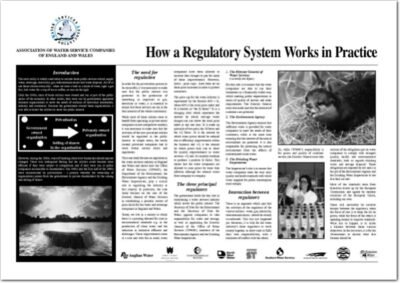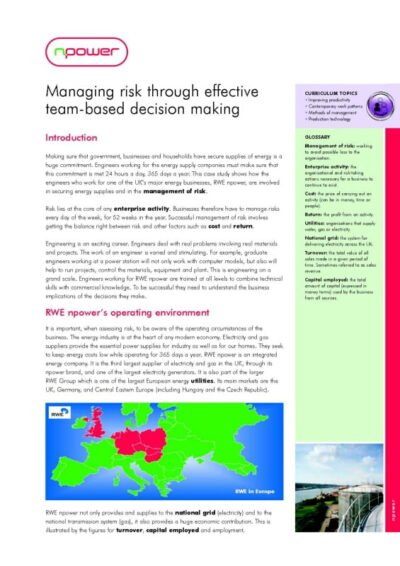Up-selling is a sales technique that encourages customers to purchase a more expensive item, an upgrade, or additional features to enhance their original choice. This practice is not merely about increasing the transaction value; it is about providing customers with options that can significantly improve their experience or satisfaction with a product or service. For instance, when a customer is considering a smartphone, a salesperson might suggest a model with more storage capacity or advanced features, highlighting how these enhancements can better meet the customer’s needs.
This approach not only benefits the business by increasing revenue but also serves the customer by offering them a more tailored solution. The concept of up-selling is often confused with cross-selling, which involves suggesting complementary products rather than upgrades. While both techniques aim to increase sales, up-selling focuses on enhancing the primary purchase.
The effectiveness of up-selling lies in understanding the customer’s preferences and needs, allowing sales personnel to present options that genuinely add value. This requires a keen insight into customer behaviour and preferences, as well as an ability to communicate the benefits of the upgraded product effectively. In essence, up-selling is about creating a win-win scenario where both the business and the customer derive greater value from the transaction.
Summary
- Up-selling is the practice of encouraging customers to purchase a higher-end or additional product or service than originally intended.
- To up-sell effectively, use persuasive language and highlight the added value of the higher-end product or service.
- Up-selling benefits businesses by increasing revenue and customers by providing them with better options and solutions.
- Common up-selling techniques include bundling products, offering upgrades, and using suggestive selling language.
- Customer service plays a crucial role in up-selling by building trust and rapport with customers.
The Art of Persuasion: How to Up-sell Effectively
To master the art of up-selling, one must first understand the principles of persuasion. Effective up-selling hinges on the ability to communicate the benefits of an upgraded product in a way that resonates with the customer. This involves not only presenting facts and figures but also tapping into the emotional drivers behind purchasing decisions.
For example, if a customer is looking at a basic laptop, a salesperson might highlight how an upgraded model with better processing power can enhance productivity, making it easier for the customer to complete tasks efficiently. By framing the upgrade in terms of improved performance and time savings, the salesperson appeals to the customer’s desire for efficiency and effectiveness. Moreover, effective up-selling requires active listening and empathy.
Sales personnel should engage with customers to understand their specific needs and preferences before making suggestions. This can be achieved through open-ended questions that encourage customers to express their requirements. For instance, asking questions like “What do you primarily use your device for?” or “Are there any specific features you wish you had?” allows salespeople to tailor their recommendations accordingly.
By demonstrating genuine interest in the customer’s needs, sales personnel can build trust and rapport, making it more likely that customers will consider the suggested upgrades.
Benefits of Up-selling for Businesses and Customers
The benefits of up-selling extend beyond mere financial gain for businesses; they also enhance the overall customer experience. For businesses, successful up-selling can lead to increased average transaction values and improved profit margins. When customers opt for higher-end products or additional features, businesses not only boost their revenue but also foster customer loyalty by providing solutions that meet or exceed expectations.
This loyalty can translate into repeat business and positive word-of-mouth referrals, which are invaluable in today’s competitive marketplace. From the customer’s perspective, up-selling can lead to greater satisfaction and value from their purchases. When customers are presented with options that genuinely enhance their experience, they are more likely to feel that they have made an informed decision.
For example, a customer purchasing a new car may appreciate being informed about advanced safety features or enhanced entertainment systems that could significantly improve their driving experience. By receiving tailored recommendations that align with their needs, customers are empowered to make choices that ultimately lead to greater satisfaction with their purchases.
Common Up-selling Techniques and Strategies
Several techniques and strategies can be employed to facilitate effective up-selling. One common method is the use of product bundling, where businesses offer related products or services together at a discounted rate compared to purchasing them separately. For instance, a software company might bundle its basic software package with additional features or services at a reduced price, encouraging customers to opt for the more comprehensive package.
This strategy not only increases sales but also provides customers with a sense of value. Another effective strategy is leveraging social proof and testimonials. When customers see that others have benefited from upgrading their purchases, they may be more inclined to consider similar options.
For example, displaying reviews or testimonials from satisfied customers who opted for higher-end products can create a sense of trust and credibility around the up-sell proposition. Additionally, limited-time offers or exclusive deals can create urgency, prompting customers to make quicker decisions regarding upgrades. By employing these techniques thoughtfully, businesses can enhance their up-selling efforts while ensuring that customers feel valued and informed.
The Role of Customer Service in Up-selling
Customer service plays a pivotal role in successful up-selling initiatives. A knowledgeable and attentive customer service team can significantly influence a customer’s perception of value and trust in a brand. When customers feel supported and understood by service representatives, they are more likely to consider additional purchases or upgrades.
Training staff to be well-versed in product knowledge and effective communication techniques is essential for fostering an environment conducive to up-selling. Moreover, exceptional customer service can create opportunities for up-selling even after the initial purchase has been made. Follow-up communications, such as emails or phone calls checking in on customer satisfaction, can serve as an opportunity to suggest relevant upgrades or complementary products based on the customer’s previous purchases.
For instance, if a customer recently bought a camera, a follow-up message could highlight accessories like lenses or tripods that enhance their photography experience. By maintaining ongoing communication and support, businesses can cultivate long-term relationships with customers while simultaneously driving additional sales through thoughtful up-selling.
Avoiding Common Up-selling Pitfalls
While up-selling can be highly beneficial, it is essential to navigate potential pitfalls that may arise during the process. One common mistake is being overly aggressive or pushy in promoting upgrades. Customers may feel overwhelmed or pressured if they perceive that sales personnel are prioritising sales over their needs.
This approach can lead to negative experiences and damage customer relationships. Instead, it is crucial to adopt a consultative approach where recommendations are made based on genuine understanding rather than mere sales targets. Another pitfall is failing to align up-sell suggestions with customer needs and preferences.
If sales personnel recommend products that do not resonate with the customer’s requirements or budget, it can lead to frustration and dissatisfaction. To avoid this issue, businesses should invest in training their teams to ask insightful questions and actively listen to customer feedback. By ensuring that up-sell recommendations are relevant and beneficial, businesses can foster positive interactions that enhance both customer satisfaction and sales outcomes.
Up-selling in the Digital Age: Online and E-commerce Strategies
In today’s digital landscape, up-selling strategies have evolved significantly with the rise of e-commerce platforms and online shopping experiences. One effective online up-selling technique is through personalised recommendations based on browsing history and previous purchases. E-commerce websites often employ algorithms that analyse customer behaviour to suggest relevant upgrades or complementary products during the shopping process.
For instance, when a customer adds an item to their cart, they may be presented with suggestions for higher-end versions or related accessories that enhance their purchase. Additionally, email marketing campaigns can serve as powerful tools for up-selling in the digital realm. Businesses can send targeted emails featuring exclusive offers on upgraded products or services based on customers’ past purchases or interests.
For example, if a customer previously bought running shoes, an email could highlight premium running gear or accessories at a discounted rate. By leveraging data analytics and personalised marketing strategies, businesses can effectively engage customers online while driving additional sales through thoughtful up-sell opportunities.
Training and Developing Up-selling Skills in Your Team
To harness the full potential of up-selling within an organisation, it is imperative to invest in training and developing the skills of your team members. Comprehensive training programmes should focus on enhancing product knowledge, communication skills, and understanding customer psychology. Role-playing scenarios can be particularly effective in helping team members practice their up-selling techniques in a supportive environment before engaging with real customers.
Moreover, ongoing coaching and feedback are essential for continuous improvement in up-selling skills. Regularly reviewing performance metrics related to up-selling success rates can provide valuable insights into areas for development. Encouraging team members to share best practices and success stories fosters a culture of learning and collaboration within the organisation.
By prioritising training and development in this area, businesses can empower their teams to approach up-selling with confidence and competence, ultimately leading to enhanced customer experiences and increased sales performance.
If you want to learn more about enhancing customer service, you should check out the article Enhancing Customer Service. This article provides valuable insights on how businesses can improve their customer service strategies to increase customer satisfaction and loyalty. It discusses various techniques and approaches that companies can use to enhance their customer service experience and build stronger relationships with their customers. By implementing these strategies, businesses can not only improve their bottom line but also create a positive reputation in the market.
FAQs
What is up-selling?
Up-selling is a sales technique where a seller encourages a customer to purchase a more expensive or upgraded version of the product they are interested in, or to add on additional items or services to their purchase.
How does up-selling work?
Up-selling works by offering the customer a higher-priced or more feature-rich option than the one they originally intended to purchase. This can be done through suggestive selling, highlighting the benefits of the more expensive option, or offering package deals.
What are the benefits of up-selling?
Up-selling can increase the average transaction value, boost sales revenue, and improve customer satisfaction by offering them a better product or service that meets their needs more effectively.
What are some examples of up-selling?
Examples of up-selling include offering a larger size of a product, suggesting a premium version with additional features, or recommending complementary products or services to go along with the customer’s original purchase.
How can businesses effectively up-sell to customers?
Businesses can effectively up-sell to customers by understanding their needs and preferences, training sales staff to make relevant and persuasive up-sell offers, and creating attractive package deals or promotions that incentivise customers to upgrade their purchase.
 How a regulatory system works in practice (PDF)
How a regulatory system works in practice (PDF)  Managing risk through effective team-based decision making (PDF)
Managing risk through effective team-based decision making (PDF) 

